

Having spent most of the day in Ascoli Piceno, we then drove to nearby Offidadrove to nearby Offida. Unfortunately, this meant that we weren't able to give Offida the time it deserves, but we still enjoyed our brief visit. At the entrance to the old city center is an interesting monument. The meaning will be clear later.
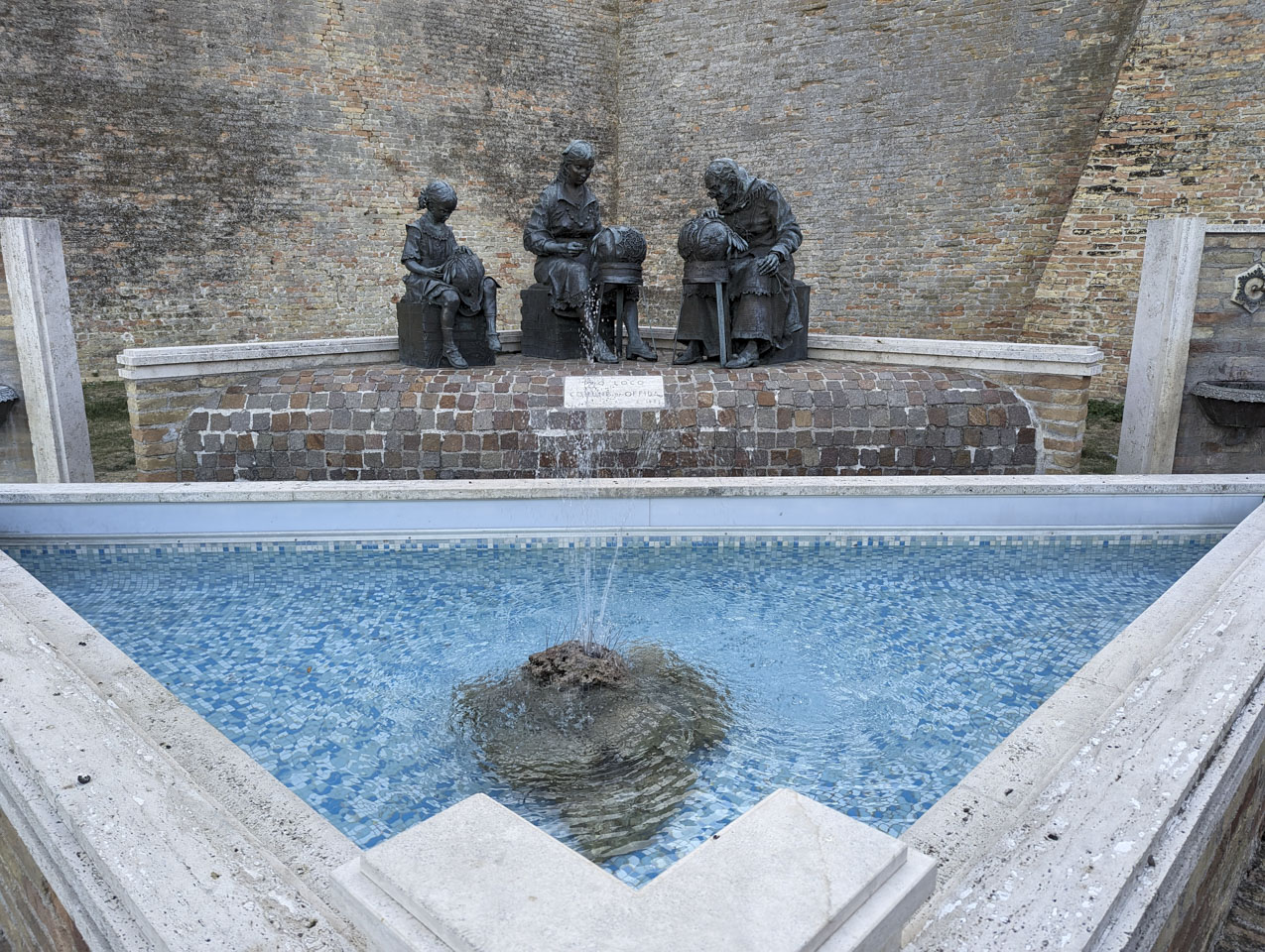
Turning around gives a view of the rest of the city, outside of the old city walls. The village follows a curved ridge line; this photo is looking across the ravine. While not as old as the 'centro', the buildings certainly are not new.
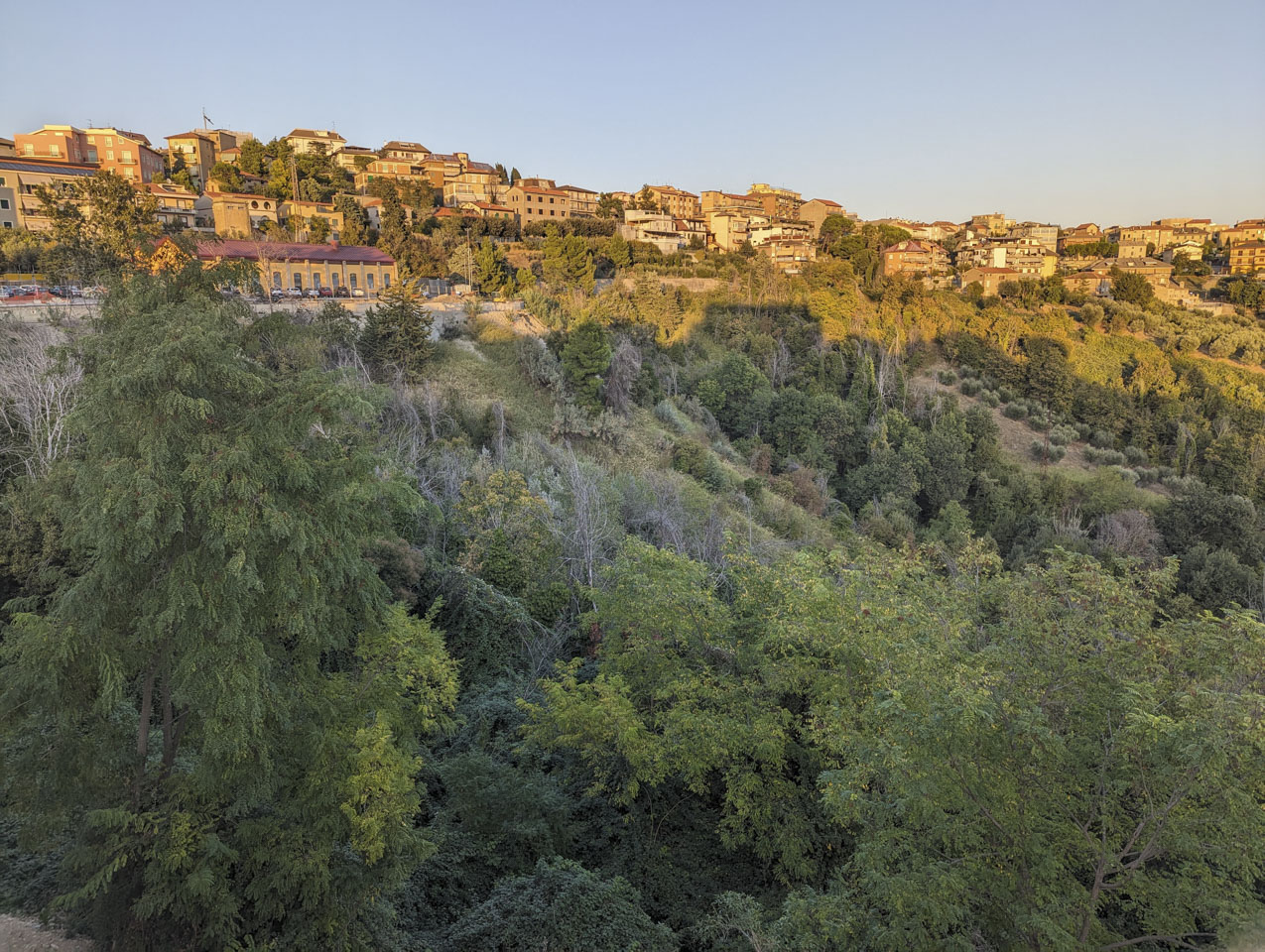
Let's play a guessing game. What is the main plaza of the city called?
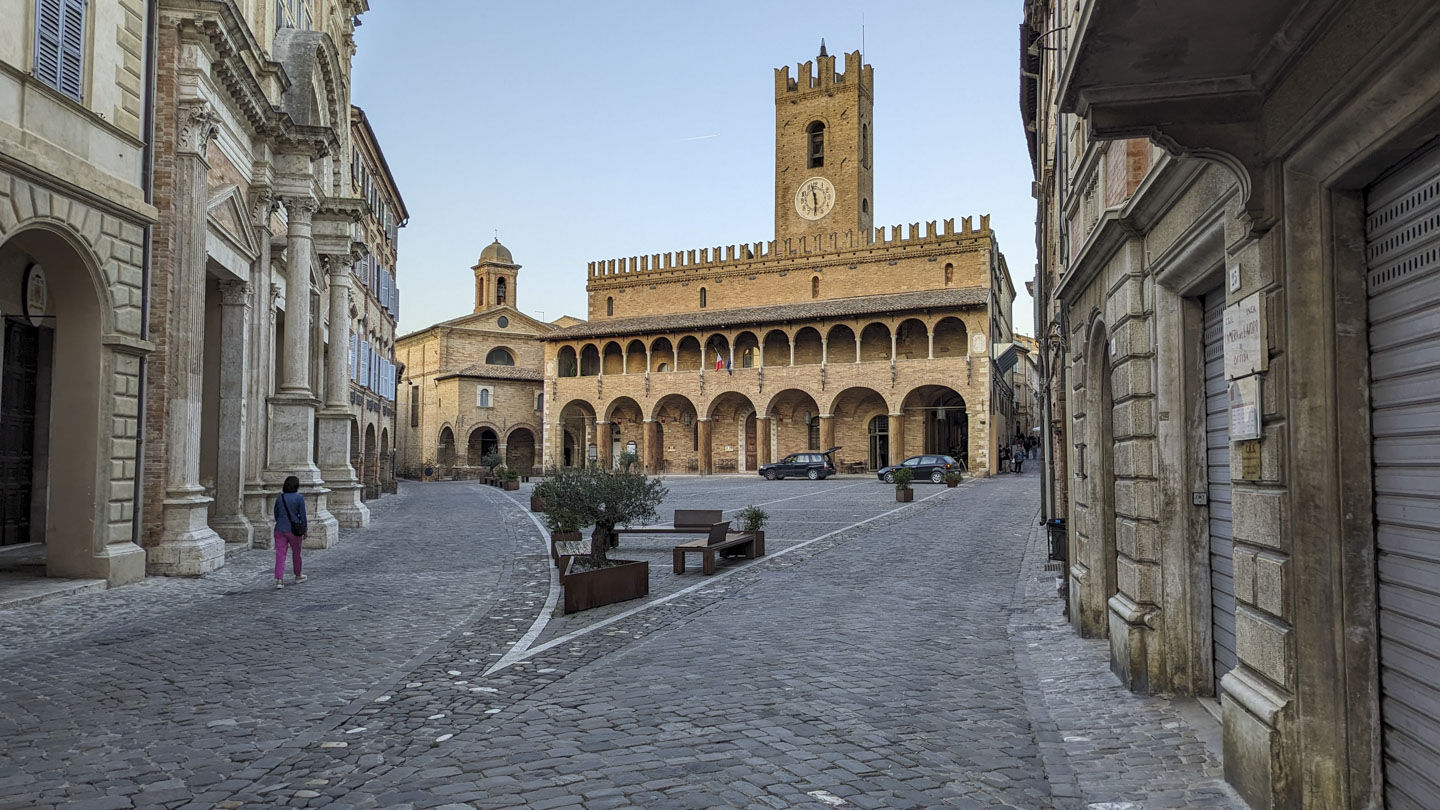
Anyone who guessed Piazza del Popolo is correct! The sign stated that the name is recent, only given in 1994. Before that it had been named for the Victor Emmanuel II, King of Italy in the late 1800s.
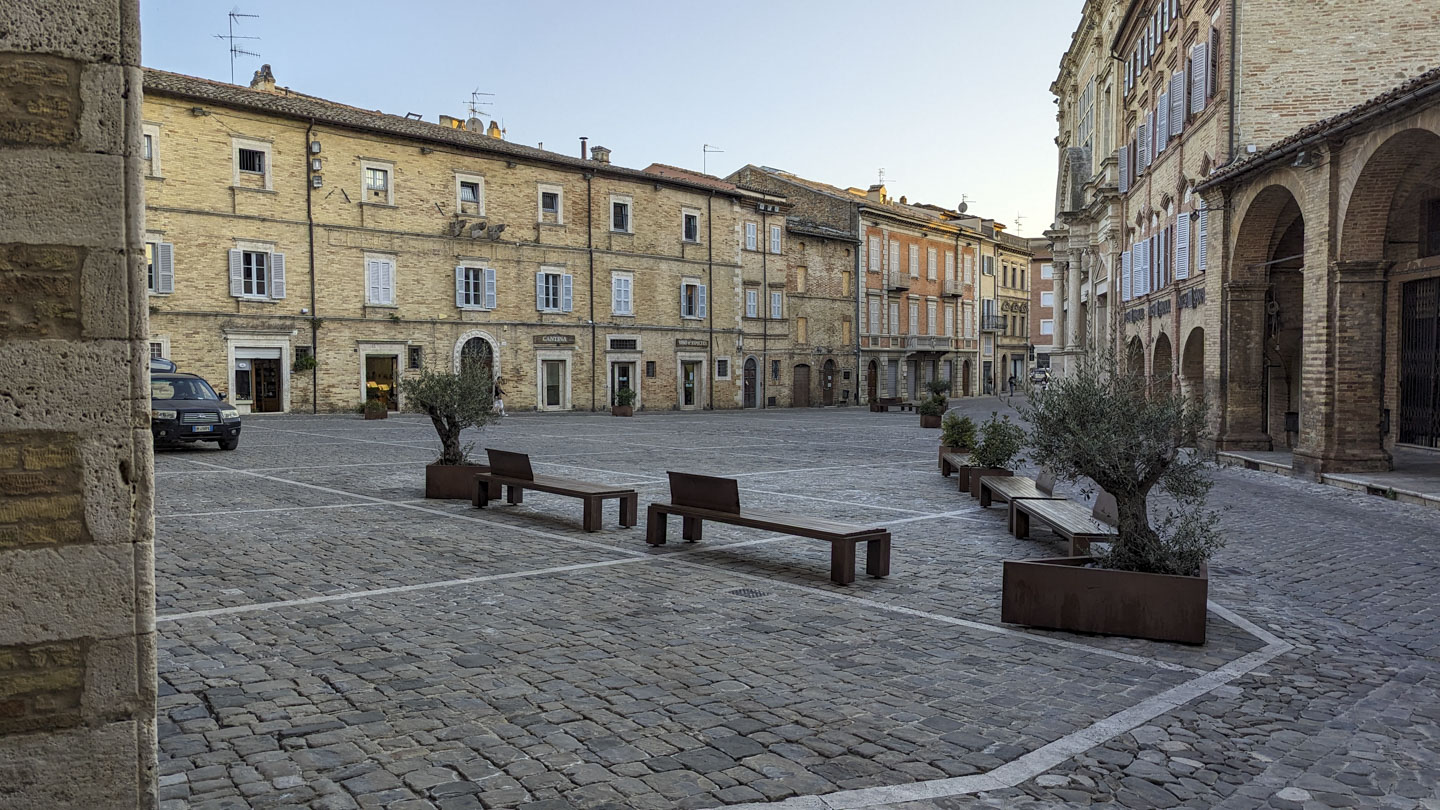
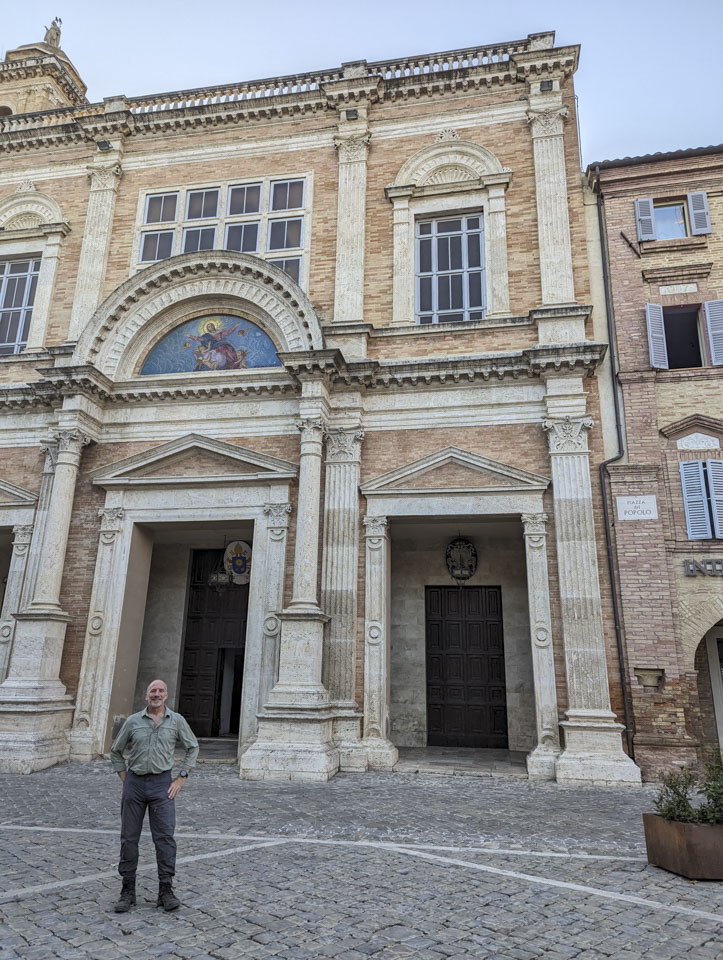
Much of our visit was spent in De Castellotti Palace Museum, which is multiple museums in one. We first visited what they call The Museum of Popular Tradition, which contains historical artifacts from daily life. This is one of our favorite styles of museums, with what would have been mundane items of daily life. An example is this smithy's forge.
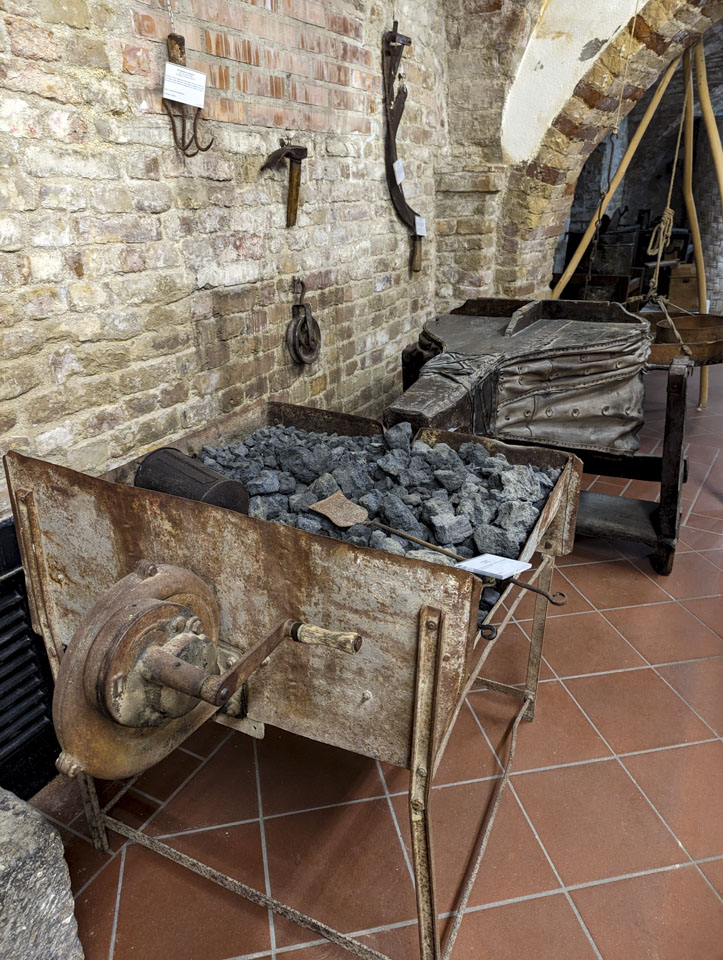
Paul demonstrates how the smith would have kept the coals hot by using the bellows. The long handle was conveniently placed near where the smith would have been working.
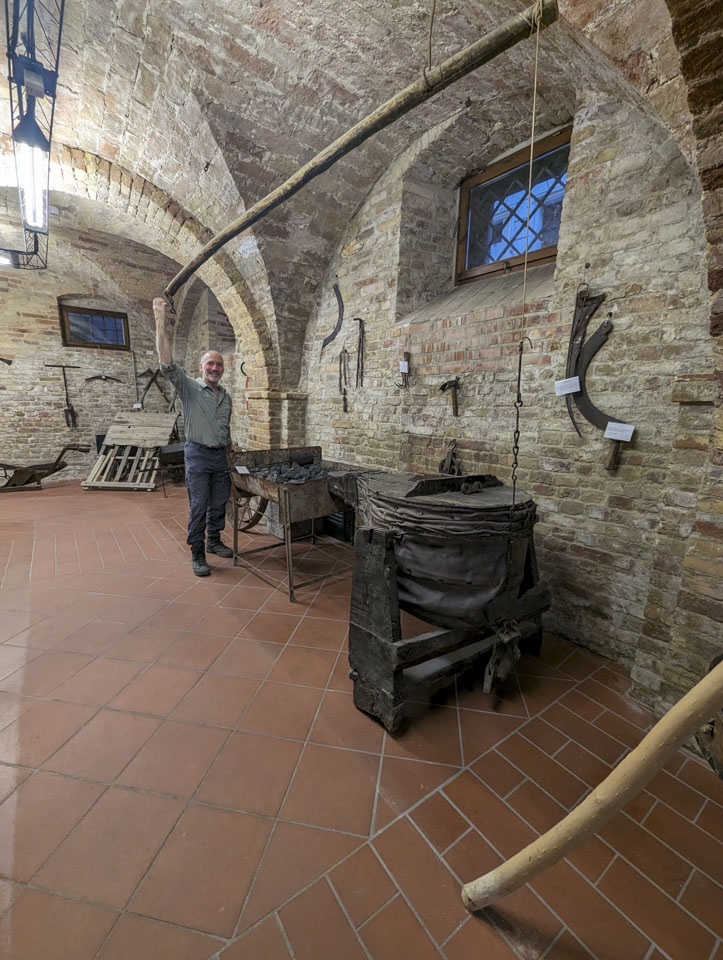
Another example is an old treadle Singer sewing machine, with some sewing instructions and old irons. The wooden object on the ground is a sleeve board; it consists of two boards connected on only one end. Pants legs or sleeves could be slipped over one side to allow them to be pressed. And yes, Anne has something very similar in her sewing room.
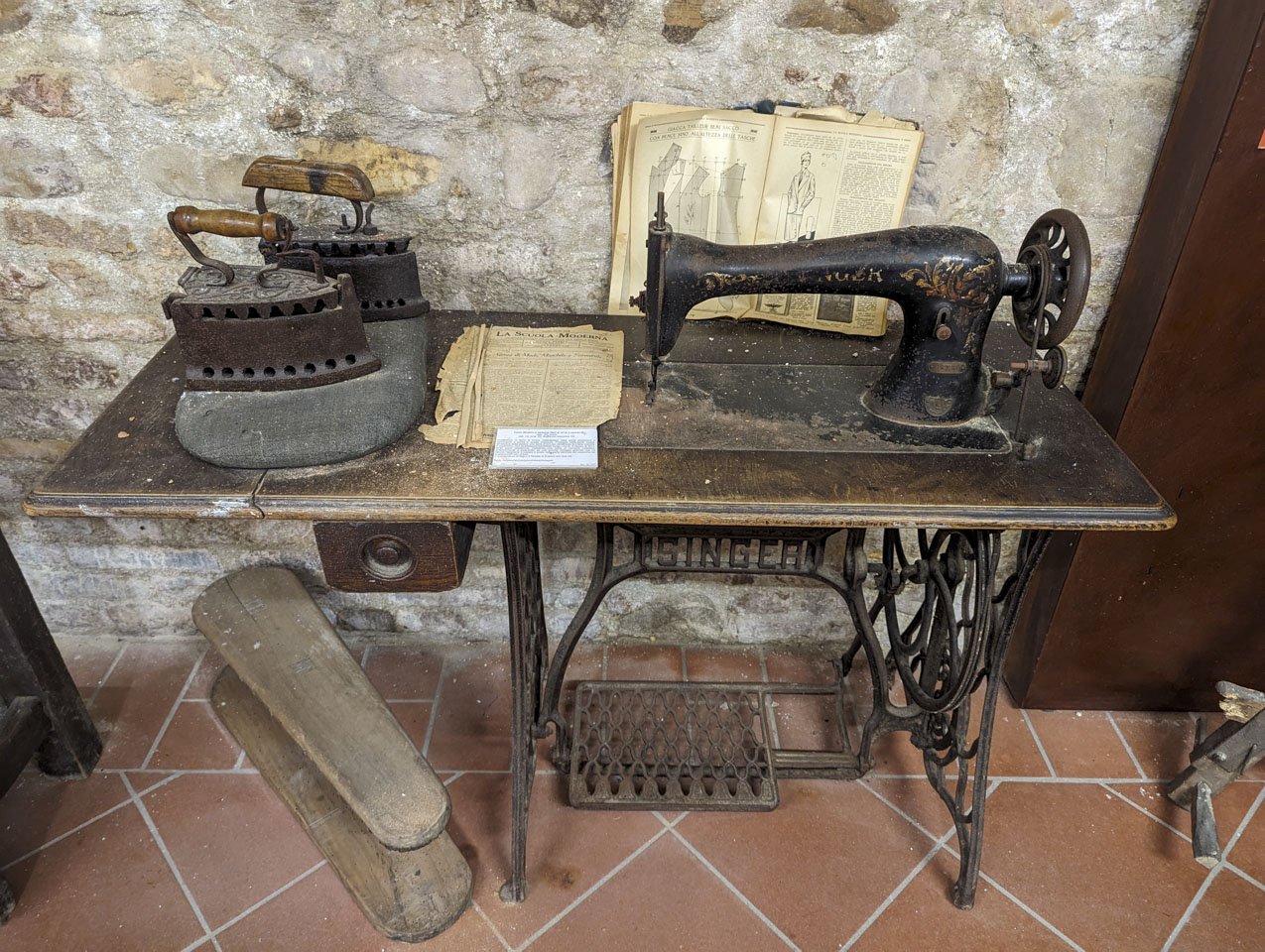
This section of the museum was in the cellar area. Below the cellar was the grotto, or underground tunnels. Those were not open to the public. You can see that the underground areas could be used to age and store wine and foodstuff.
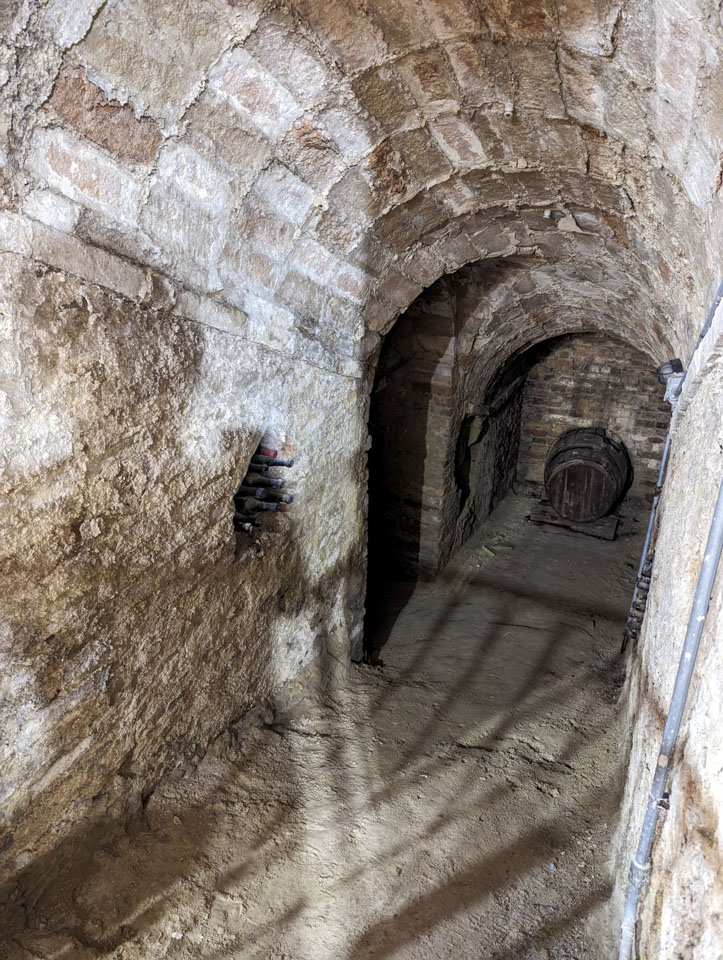
The entrance level of the museum had an exhibit of paintings by a local artist. Sorry for all the reflections in this photograph.
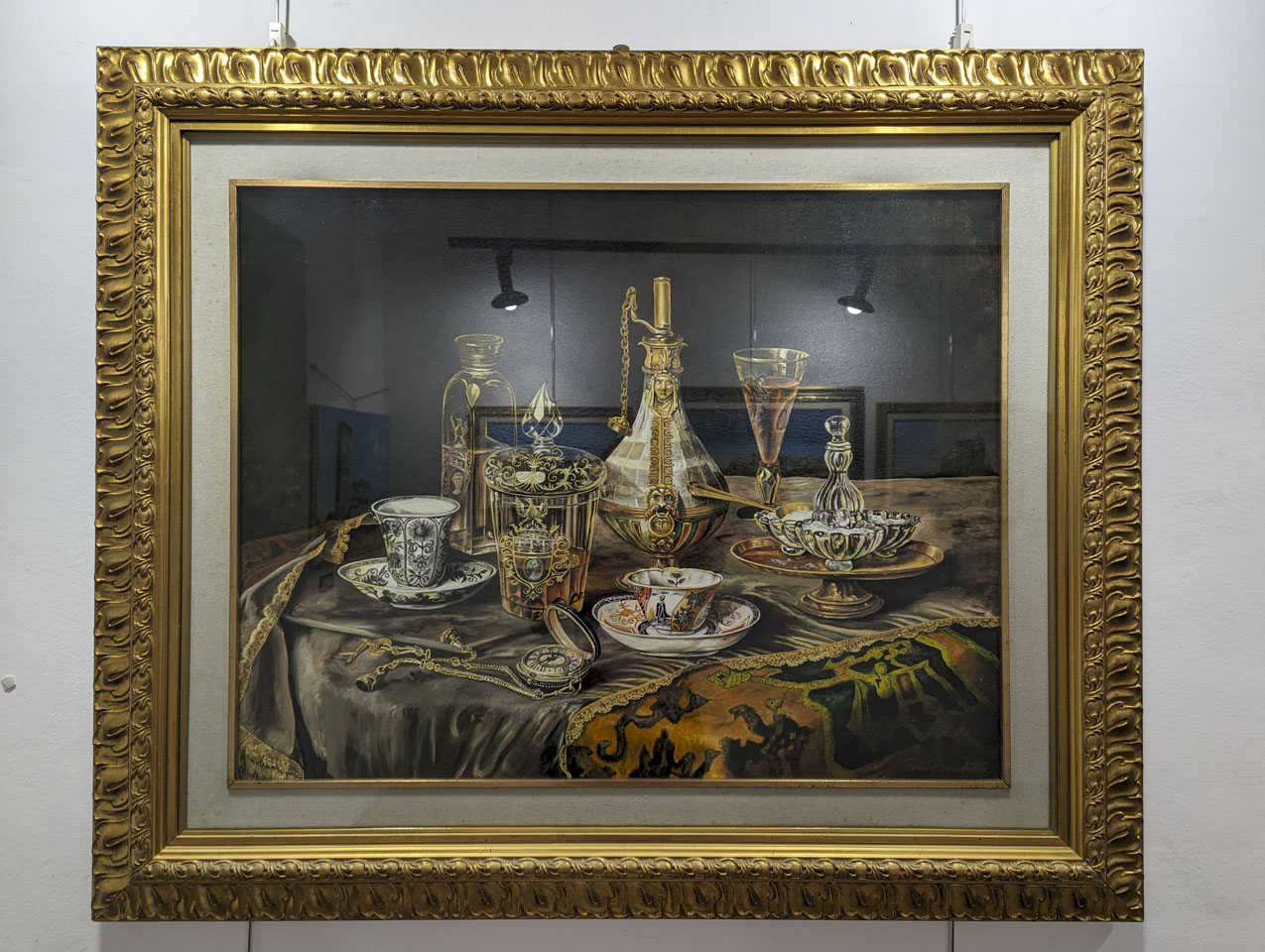
The top floor had an archeology section, which echoed what we saw in the archeological museum in Ascoli Piceno. This is one of the 'pettorale', or pectoral breastplates, that go back to the 7th century BCE.
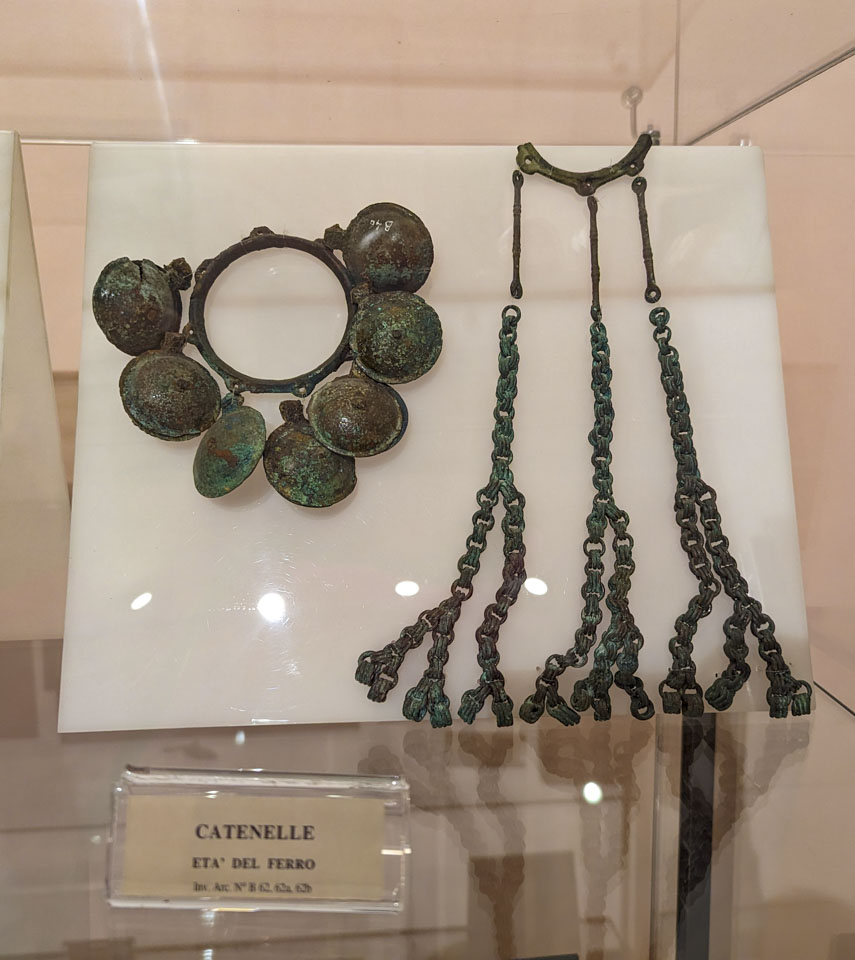
They also had a large display of Offidian bobbin lace. The monument that we saw when entering the city celebrates this lace, showing 3 generations of women making the 'Merletto a Tombolo' (bobbin) lace. Although it is not known exactly when the production of this lace started, it became popular in the 1600s, even sewn on to men's armor. Bobbin lace, as the name implies, is made using many strands of thin thread that are housed on bobbins. The lace can be made using only a few bobbins to more than 100. Here are 3 of the examples shown: a small decorative inset, an altar cloth, and a designer dress.
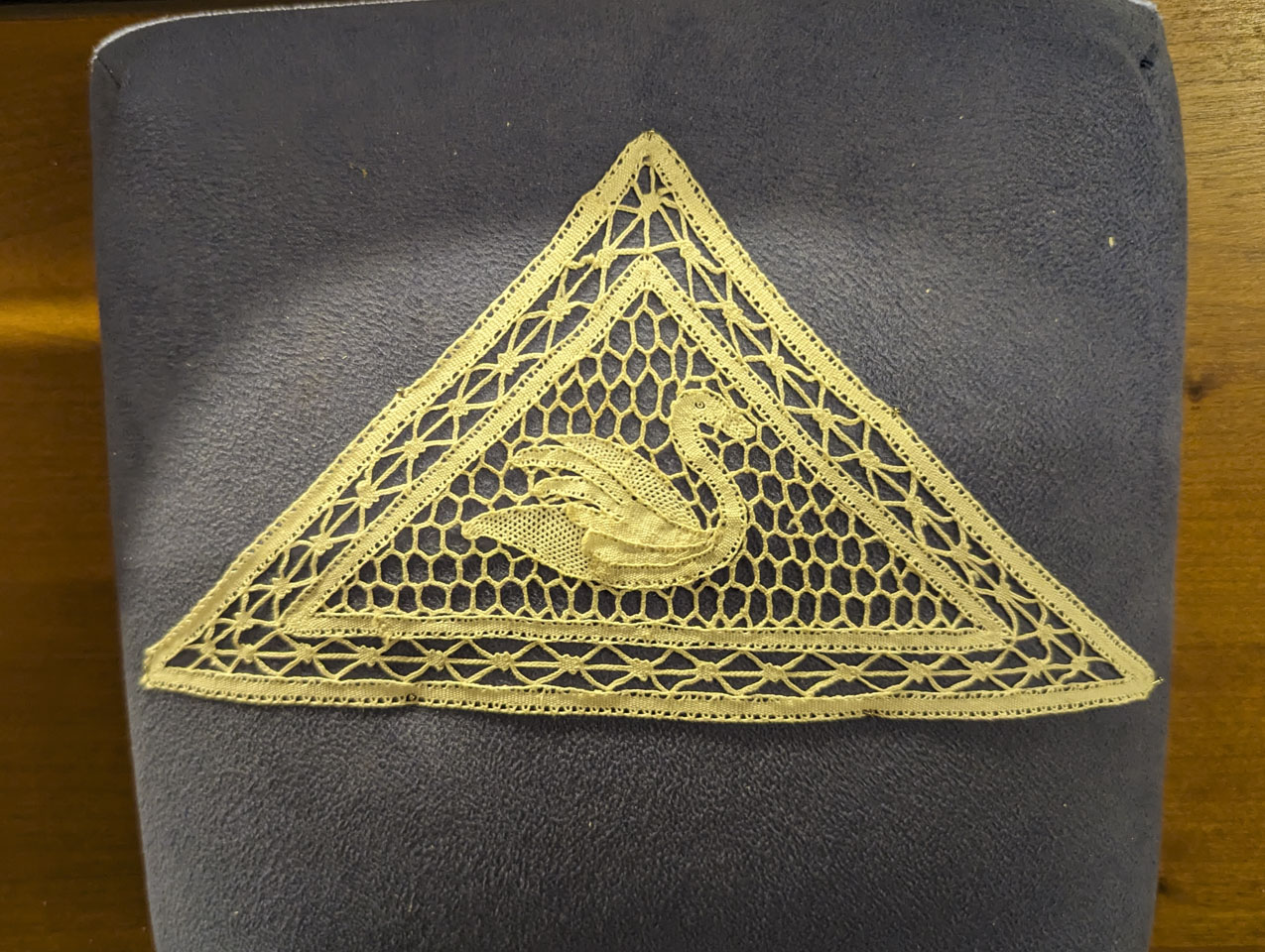
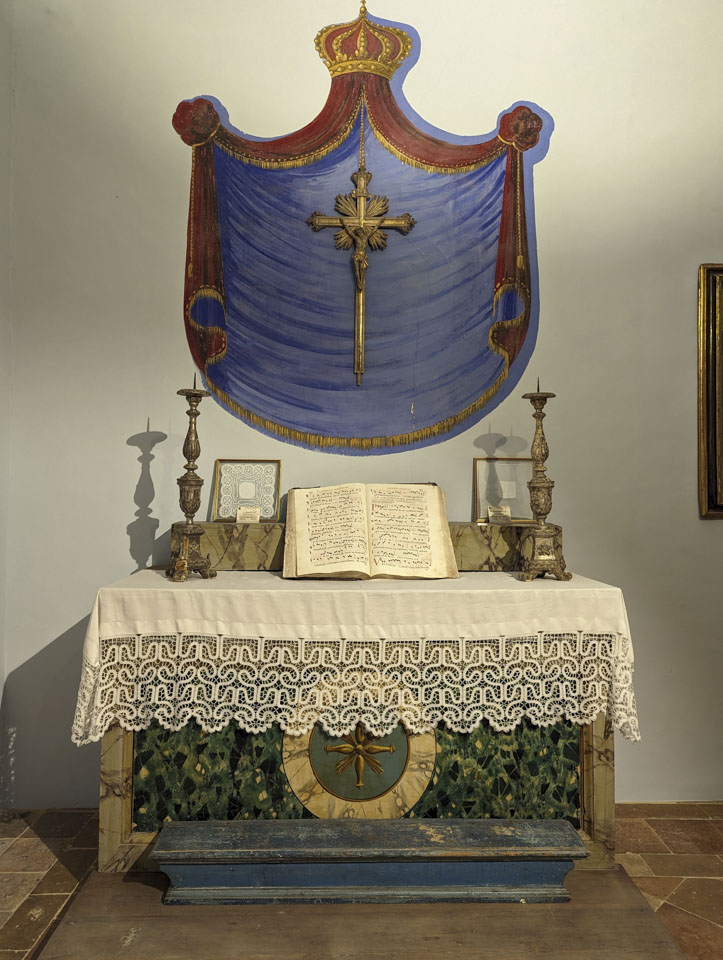
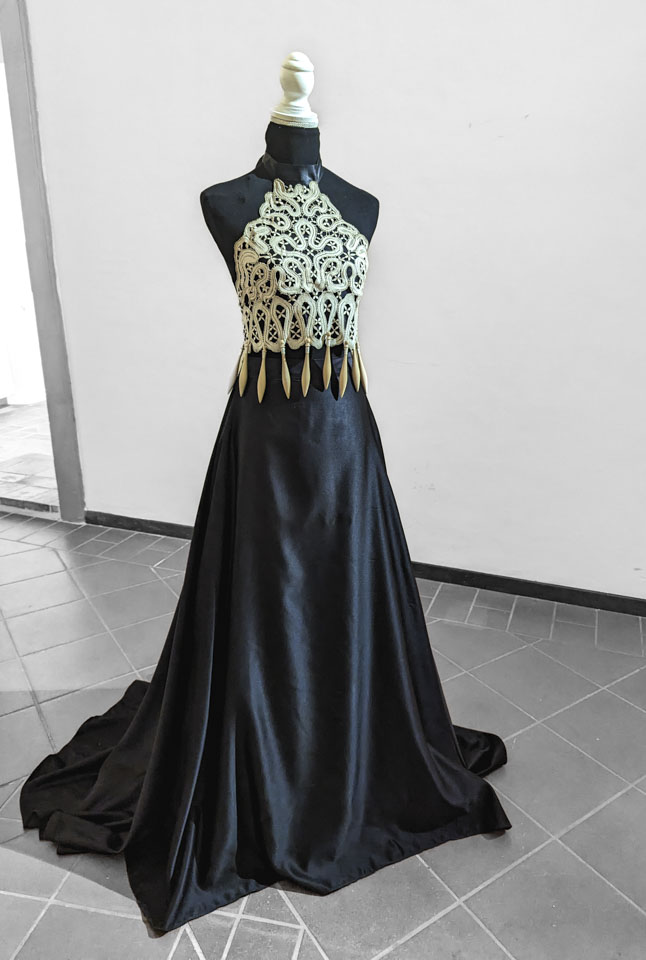
One of the famous buildings in Offida is the Church of Saint Maria della Rocca. The original portion of the church dates from at least the 11th century. Benedictine monks expanded the church in 1330. It was damaged in earthquakes, and the restorations further changed the appearance of the building.
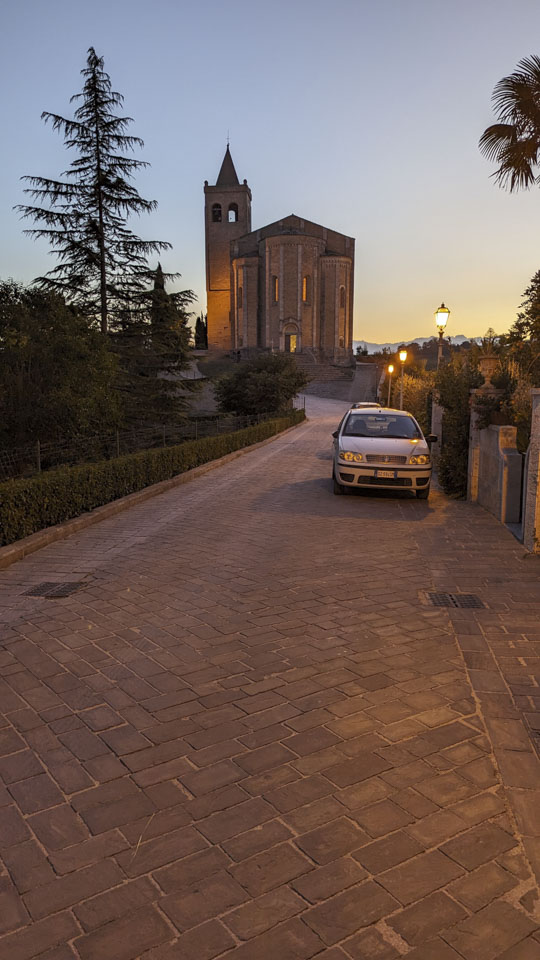
The church closed about the time we got there, so we only had a quick glimpse inside.
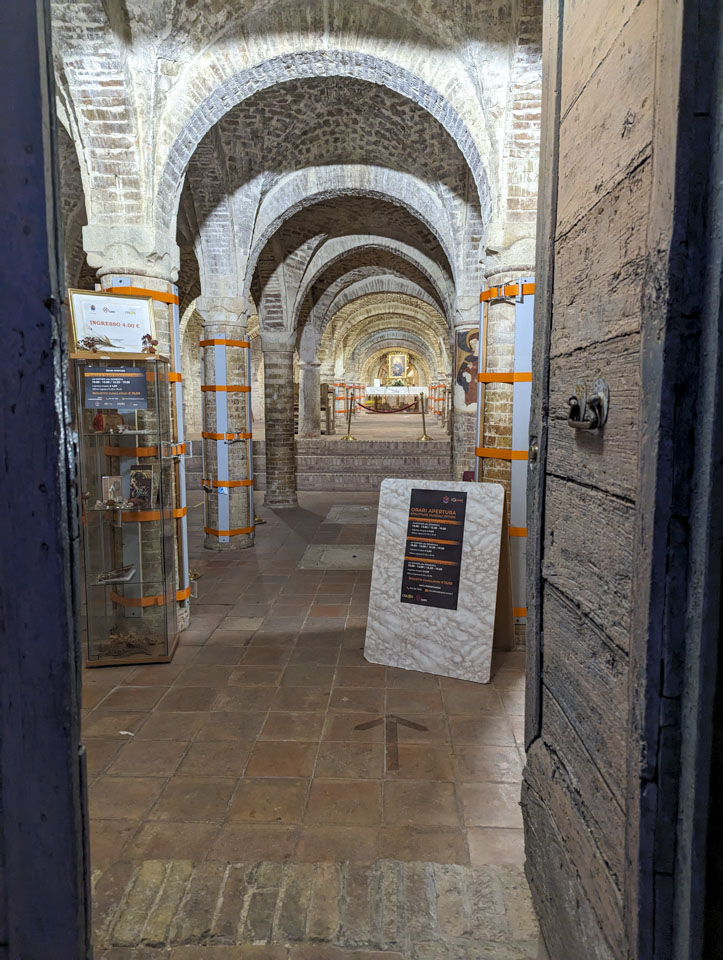
The church has very thick walls.
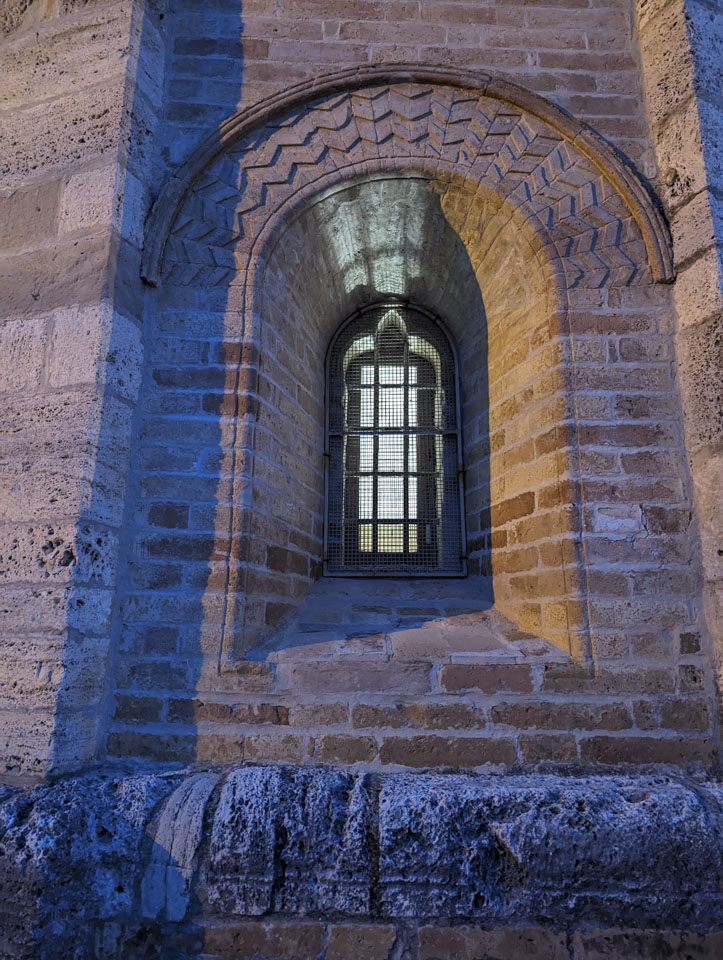
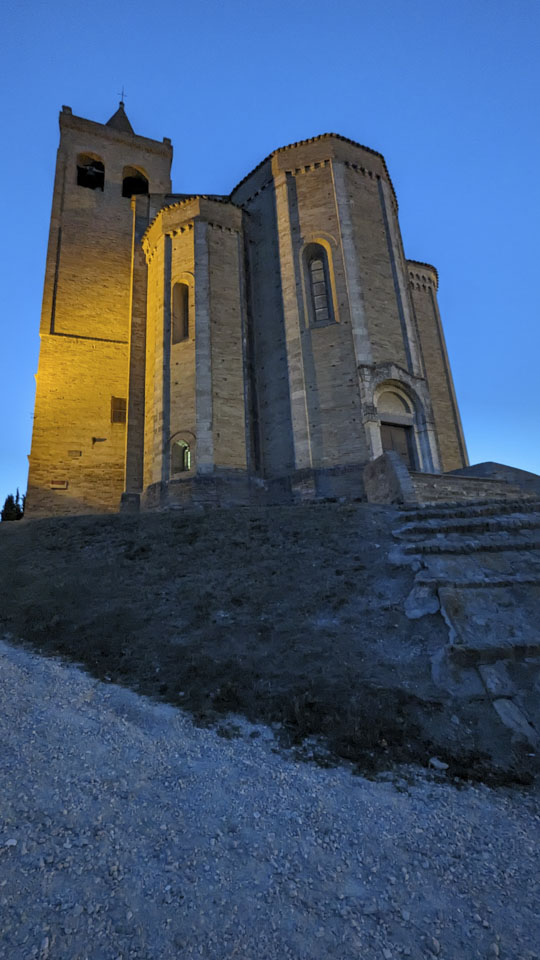
Here is the view from outside of the church:

It was definitely getting late by this point. People were coming out and enjoying the mild weather. The historic walls of the city were light, highlighting on of the towers that is now partially exposed. The walls date from the late 1400s; the lights were added in 2019.
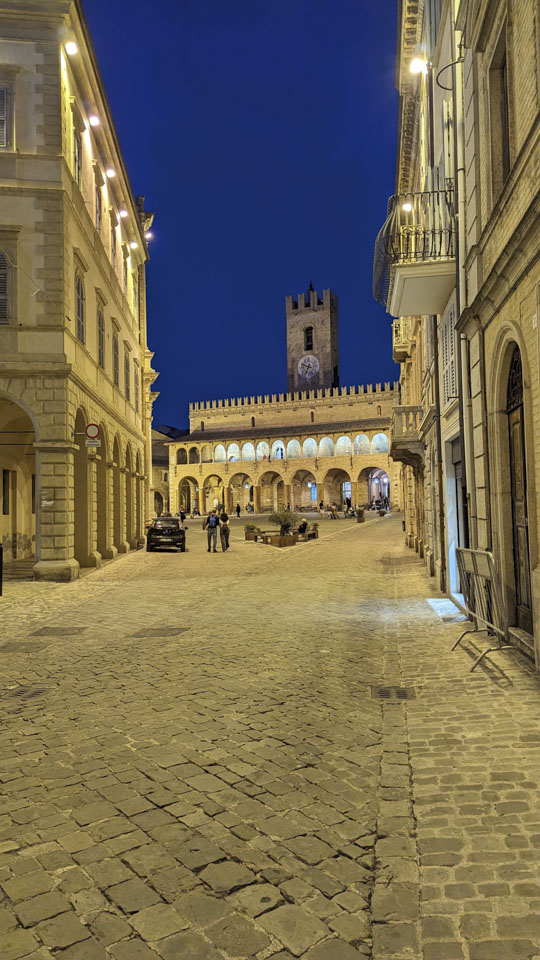
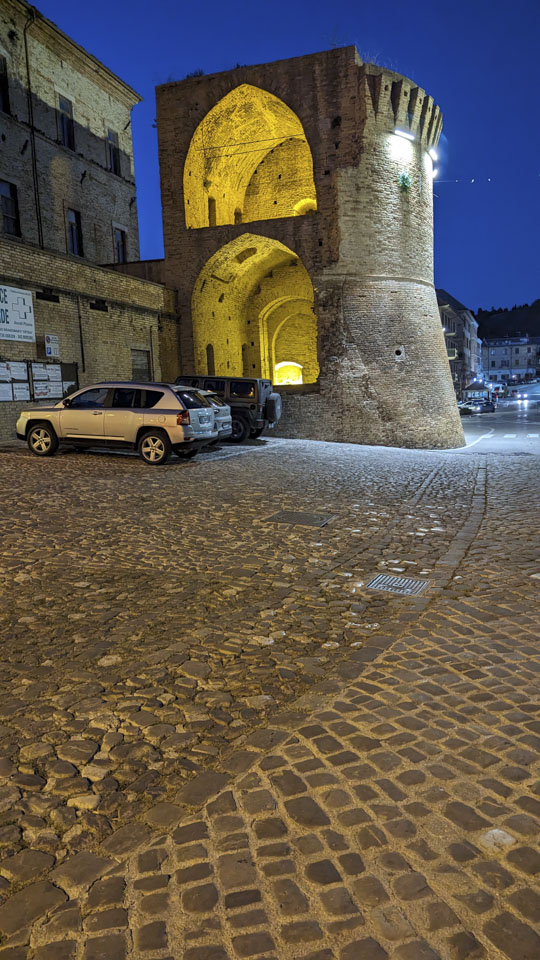
One of our last views of Offida was again the monument that greeted us on arrival. The monument was created by Offida native Aldo Sergiacomi in 1983. It shows 3 generations of women making Offida bobbin lace.
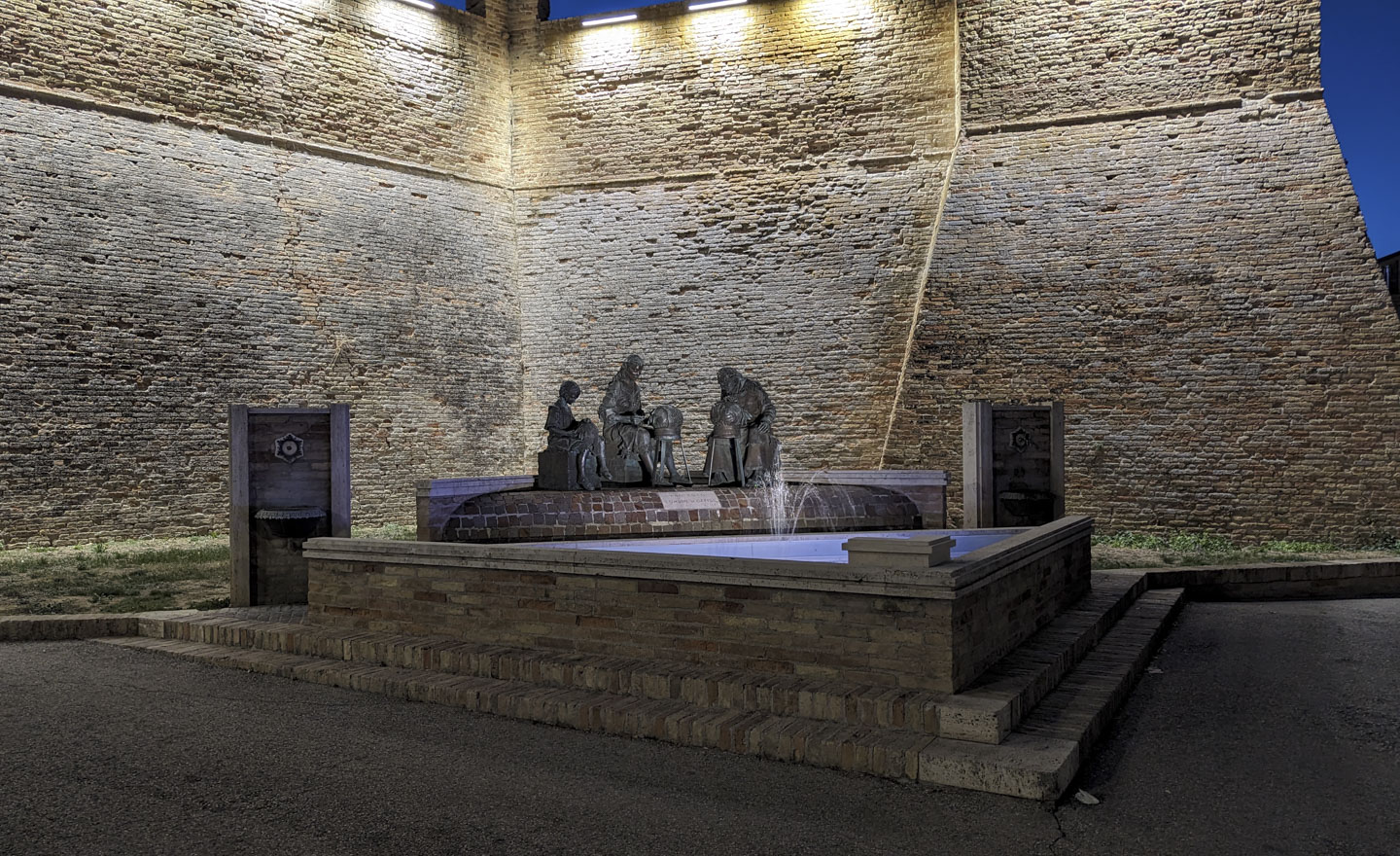
By this point it was late for supper, even by Italian standards. Fortunately Pizzeria Mille Voglie (a thousand cravings) was on the road back to our Airbnb. Anne got mushroom, and Paul got what they call a Margarita Pizza. Interestingly, the Margarita pizzas in Le Marche have basil in the sauce, but do not have fresh basil on top like they do in the United States.
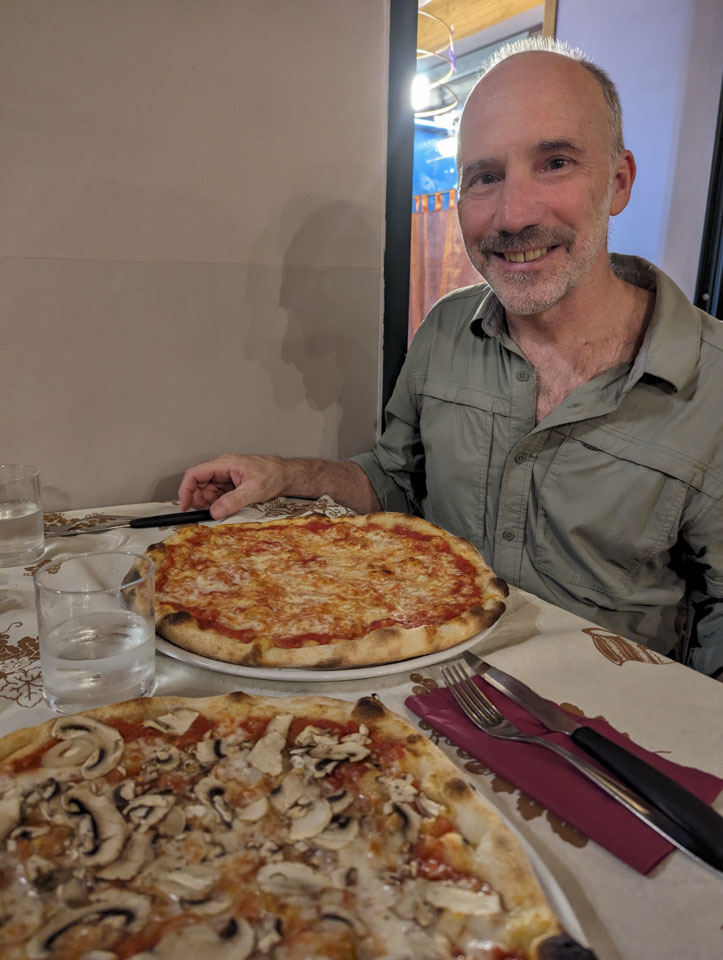
Updated January 2024